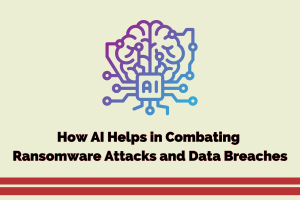Internet of Things (IoT) Security: Challenges and Best Practices

The internet of things (IoT) is a huge network of internet-connected physical products (i.e., items) that transmit information with other systems and platforms. While it relates to the devices themselves, IoT is widely used as an encompassing term to represent a highly dispersed network that integrates connection with sensors and compact applications embedded in tools and gadgets.
They are employed to communicate data with other devices, purposes, and systems for a wide range of applications ranging from smart plugs and transmission lines to linked vehicles and medical equipment.
IoT has evolved into one of the greatest widespread networked technologies, with billions of implementations worldwide, because of low-cost processing and the cloud. With instantaneous, streaming connectivity for daily consumer devices and major manufacturing systems, IoT links the digital and physical worlds.
Intro to IoT Security
IoT security is a catch-all term for the methods, techniques, procedures, systems, and methodologies used to safeguard all parts of the internet of things. The prevention of hardware elements, programs, data, and network services is incorporated into IoT security to assure the reliability, authenticity, and security of IoT ecosystems.
Due to the enormous amount of faults revealed in IoT systems on a daily basis, security concerns arise leading to security challenges in IoT. Robust IoT security encompasses all aspects of defense, including item hardening, tracking, system updates, access controls, threat responses, and vulnerability repair.
IoT security is crucial since these systems are widely dispersed and susceptible, making them a specific effective attack vector. Unauthorized disclosure to IoT devices guarantees that they do not serve as a portal into other sections of the network or disclose critical information.
Vehicles and smart grids, as well as wearable and home automation gadgets, all have IoT security bugs. Researchers noted camera systems that could be easily accessed to acquire network connectivity, as well as smart watches with security flaws that permitted hackers to monitor the user’s whereabouts and spy on communications.
Significance of IoT Security
IoT is commonly regarded as one of the most major security flaws, affecting practically everyone such as consumers, businesses, and governments. For all of the benefits and value that IoT technologies provide, the hazards are unmatched. IoT security is critical because these devices give hackers a large and exposed threat environment.
IoT security offers the critical safeguards required for these susceptible gadgets to overcome the challenges in IoT security. IoT system manufacturers are known to prioritize device usability over security. This emphasizes the necessity of IoT security and the responsibility of consumers and IT teams to adopt safeguards.
IoT security concerns
While IoT devices play a major role in the topic of IoT security, focusing just on one element of the IoT doesn’t really offer a whole perspective of why security is required and what it comprises. Many components influence the importance of IoT security nowadays.
Threats and risks
IoT security is crucial due to the increased attack surface of vulnerabilities that have previously plagued networks. Unprotected procedures among users and businesses that may lack the means or expertise to appropriately safeguard their IoT ecosystems add to these concerns.
These safety concerns also include following:
- Vulnerabilities
Vulnerabilities are a major issue that continually afflict people and companies. Among the primary reasons, IoT devices not being secure is a limitation of computing capability for built-in security.
Another factor for the widespread vulnerabilities is the minimal budget for creating and evaluating safe programming, which is driven by the cost of products and their fairly short life cycle.
In addition to the devices directly, flaws in web apps and associated technology for IoT devices can harm systems. Malware programmers are on the watch for such possibilities and are well-versed on earlier flaws.
- Malware
Despite their minimal computing capabilities, most IoT devices may be compromised by malware. This is something that fraudsters have employed well in recent years. IoT botnet malware is one of the most common kinds since it is both adaptable and rewarding for hackers. Cryptocurrency mining malware and ransomware are examples of other malware samples.
- Massive cyber attacks
Infected devices are frequently utilized in DDoS assaults. Hijacked gadgets can also be utilized as an offensive platform to infiltrate new machines and cover malicious activities, or as an access point into a company’s network for lateral movement.
While companies may appear to be the most desirable targets, home automation systems are also subject to a surprising number of unplanned assaults.
- Theft of data and uncertain exposure
Connected gadgets, like everything else engaging with the network, enhance the likelihood of exposure online. These gadgets can mistakenly store and exploit sensitive technical and even private information.
- Poor management and malfunction of devices
Security flaws, poor password protection, and general device mishandling can all influence the effectiveness of these threats. Consumers may also lack the skills and understanding to adopt suitable security measures, in which case network operators and manufacturers must assist their clients in achieving greater protection.
Potential implications of IoT attacks
Besides from the dangers directly, the implications of these threats in the IoT environment can be even more devastating to manage with. The Internet of Things has the potential to have a significant influence on both digital and physical operations.
Cyber-attacks on IoT ecosystems may have significantly more unforeseen implications since they are more easily translated into physical effects. This is especially evident in the sphere of industrial internet of things (IIoT), where previous assaults have already revealed unforeseen consequences.
IoT devices have already been used in the medical industry to surveillance patients’ vital signs, which has proven incredibly useful during the epidemic.
These threats might disclose critical patient records or potentially risk their life and safety. Vulnerable gadgets in the smart home might allow hackers to watch the family, and corrupt security equipment.
How to Safeguard the Internet of Things
There is no quick resolution for the security vulnerabilities and dangers. Certain tactics and technologies may be required to appropriately secure highly specialized systems and components of the Internet of Things.
However, individuals may lower risks and prevent attacks collaborating with IoT Application Development Company & get a reliable solution built by following a few recommended practices:
- Appoint an administrator to the situation
Having someone function as an administrator for IoT devices and the network can assist to reduce security oversights and vulnerabilities. They will be responsible for safeguarding the integrity of IoT devices, including at home.
The position is crucial, especially in this era of WFH settings, when IT professionals have little control over safeguarding home networks, which now have a bigger impact on workplace networks.
- Examine for fixes and upgrades on a constant schedule
Security flaws are a serious and ongoing concern in the domain of IoT. This is due to the fact that vulnerabilities might arise from any degree of IoT devices. Malicious hackers continue to utilize older flaws to infect devices, revealing how long unencrypted devices may remain online.
- Employ strong and distinct passwords for all applications
Robust credentials aid in the prevention of numerous threats. Password managers can assist users in developing distinct and secure passwords that can be stored in the app or program itself.
- Wi-Fi security should be prioritized
Consumers may accomplish this by activating the router firewall, deactivating WPS and configuring the WPA2 authentication process, and utilizing a complex encryption for Wi-Fi connection. This phase also includes maintaining appropriate router settings with the help of IoT app development.
- Keep track of baseline network and device activity
Cyber-attacks are notoriously difficult to identify. Considering the benchmark performance of devices and networks (throughput, normal bandwidth, etc.) might help users see variations that indicate malware outbreaks.
- Make use of network segmentation
Consumers can reduce the danger of IoT-related threats by configuring separate networks for IoT devices and guest connections. Network segmentation also aids in the prevention of the transmission of assaults and the isolation of potentially risky gadgets that cannot be taken offline quickly.
Conclusion
Apart from implementing these security standards, users need also be informed of current technological advances. Over past years, there has been a greater emphasis placed on IoT security.
Research on ways to safeguard specific businesses, monitor IoT-related dangers, and prepare for impending game breakers such as 5G is progressing in some of the IoT app development companies. Users must realize that the Internet of Things is a dynamic and evolving sector, and that its security must constantly adapt and respond to its alterations.
Author Bio:
Patel Nasrullah Co-founder Peerbits, one of the leading Top web application development company USA, in 2011. He devotes his time in inspiring young leaders to take the leap of faith. With the experience of 10 years in Web and App development, he now gives full attention to the enterprise by offering mobility solutions about the strategic planning and execution.






